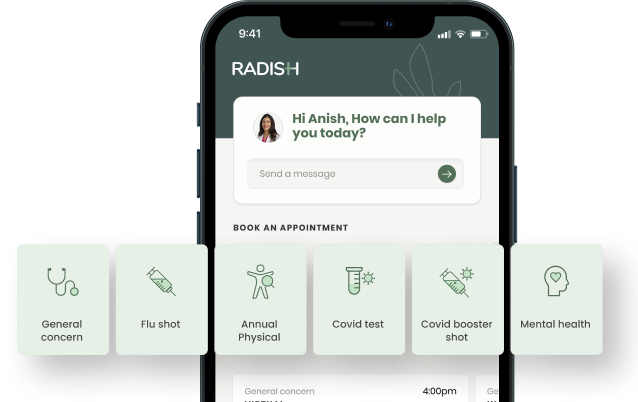When to Screen for the 5 Most Common Forms of Cancer

Dr. Jason Sellers
When it comes to cancer, knowing your risks and early detection make the best defense. Here are the common risk factors and screening guidelines for the 5 most common forms of cancer.

February is National Cancer Prevention Awareness Month and it’s very important to learn about cancer screenings – when to start, how often to screen, and how the tests work. The best defense against cancer is screening on the recommended schedule and catching any potentially malignant growth sooner than later.
According to the World Health Organization, the 5 most common forms of cancer are skin, lung, breast, prostate, and colorectal, so we’ll look at each of these to identify common causes and the ideal screening schedule.
Skin

Skin cancer is one of the most preventable types and the biggest risk factor in our control is exposure to the sun’s ultraviolet rays. The best protection is avoiding prolonged exposure to the sun and using effective sun protection on a regular basis.
According to the Centers for Disease Control and Prevention, some natural risk factors for skin cancer include:
- A personal or family history of skin cancer
- Aging
- Certain kinds or large numbers of moles
- Light or fair skin that easily burns, freckles, reddens, or becomes painful in the sun
- Red or blond hair
- Blue or green eyes
While the need for routine screening for skin cancer varies based on the individual, it’s important to check yourself for new moles every once in a while, especially if you have a large amount already. Troublesome moles and freckles can be spotted using an ABCDE framework: Asymmetrical shape, Border irregularity, Color is uneven or splotchy, Diameter is larger than a pea, and Evolving over the past few weeks or months.
If you spot any moles fitting these criteria, talk to your doctor for an examination.
Lung
The second-most common kind of cancer, lung cancer has some pretty well-known risk factors:
- Smoking or exposure to secondhand smoke
- Exposure to radon, a gas that leaks out of the ground or contaminates wells
- Personal or family history of lung cancer
- Exposure to asbestos, arsenic, or diesel exhaust
Thankfully, this kind of cancer doesn’t require regular screening for most people. However, annual tests are recommended for people between 50 and 80 years old who currently smoke, have quit in the past 15 years, or have a history of smoking 20 “pack-years” (a pack-year is when a person smokes one pack per day for a year).
Breast

The most common cancer, breast cancer primarily affects women and has a wide variety of risk factors outside of a person’s control:
- Aging past 50
- History with reproductive hormones (early menstruation and late menopause are contributing factors)
- Breast density
- Personal history of breast cancer or other noncancerous breast diseases
- Family history of breast or ovarian cancer
- Previous radiation therapy treatment
- Some known genetic mutations affecting the BRCA1 and BRCA2 genes
Some preventable risk factors have also been linked to breast cancer:
- A lack of physical activity
- Drinking alcohol
- Reproductive history, such as not breastfeeding, never carrying a pregnancy to term, or having a first pregnancy after 30
- Obesity after menopause
- Taking hormones as part of certain hormone replacement treatments during menopause or some oral contraceptives
It’s recommended that women without any risk factors seek a mammogram test at least once every two years between the ages of 50 and 74. Women aged 40-49 may also need to start regular screening with mammograms and should consult with their primary care physician to discuss further.
In between medical screenings, the Cleveland Clinic recommends performing monthly self-exams to identify lumps or any other possible regularities. This practice can also help women develop a familiarity with their breasts and more easily spot problems in the future.
Prostate
Prostate cancer affects about 13% of men in the US and it’s twice as likely to affect Black men. The other major risk factors are age and family history of prostate cancer within one degree or within the previous three generations of your family.
Screening is recommended for men between 55 and 69 years old, but they should weigh the pros and cons of testing with their doctor on an individual basis. Men older than 70 should not be screened routinely without due cause.
Colorectal

Colorectal cancers emerge when cells in the colon (or large intestine) and rectum spiral out of control. It’s common to have abnormal growths known as polyps that grow in the region, with some of them becoming cancerous over time. Screening tests often include removing these polyps as a preventative measure.
Here are the best-known lifestyle risk factors for colorectal cancers:
- A diet lacking fruit and vegetables
- A low-fiber and high-fat diet
- A diet high in processed meats
- Lack of regular physical activity
- Alcohol consumption
- Tobacco usage
- Obesity or being overweight
Some uncontrollable factors are:
- Aging
- Bowel-based diseases like Crohn’s or ulcerative colitis
- A family history of colorectal cancer or polyps
- A genetic syndrome such as familial adenomatous polyposis or Lynch syndrome
Screening for colorectal cancers should be done for patients aged 45-75 and patients over 75 should consult with their physicians if they need continued testing. Thankfully, there are a variety of tests beyond the traditional colonoscopy these days, so it’s much easier on patients to conduct testing.
Stool testing can be done easily from home, either every year with a FIT test or every 3 years through the DNA-FIT test. Full colonoscopies are only needed every ten years unless there’s an elevated risk of cancer or a patient’s results from other tests produce abnormal results.
To determine the right testing regimen, consult your doctor about your risk factors, your preferences, and the pros and cons of the different options. Together, you can build your screening plan and keep a firm watch out for colorectal cancers. Radish Health patients can book an appointment or chat with our doctors anytime to get started.
Request a Free Demo
Learn how Radish Health can help you improve employee health and save on healthcare.
Request a Demo